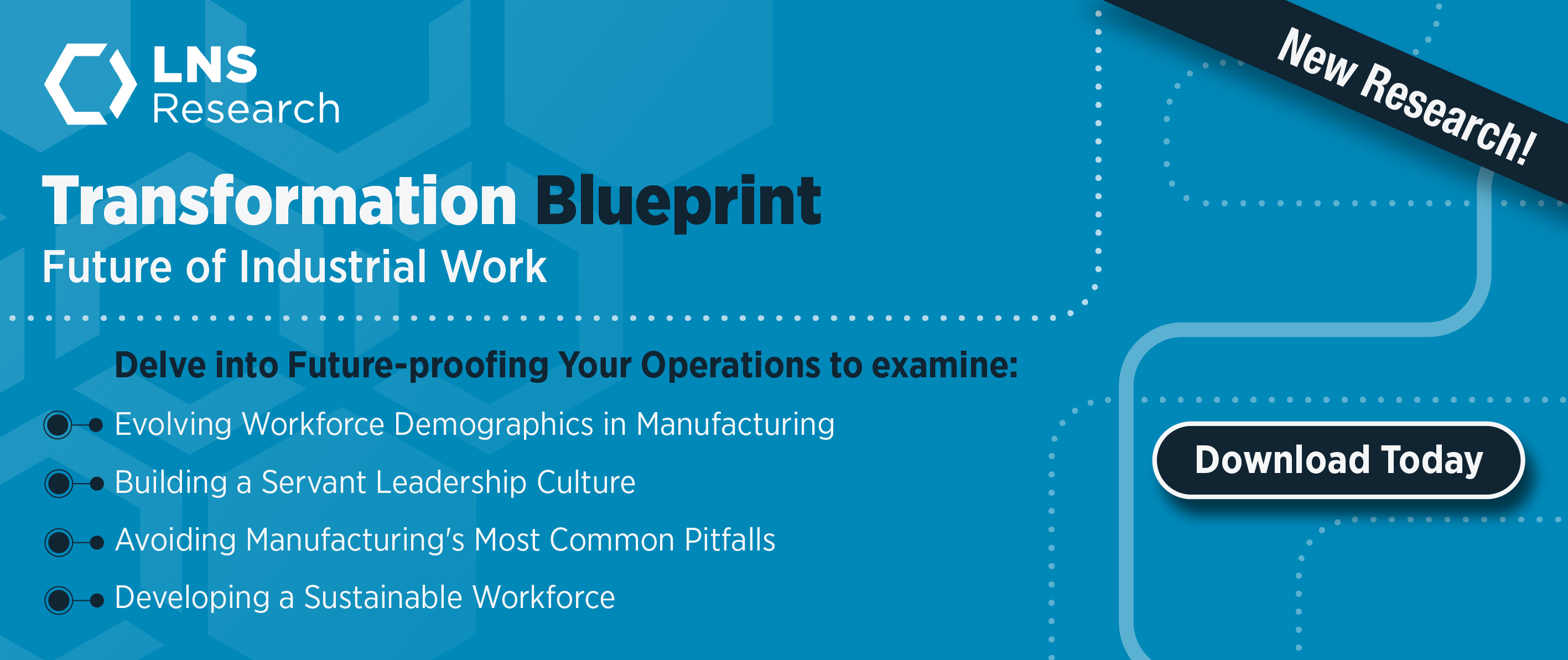The workforce shortage has been the burning platform for many manufacturing CEOs. The latest data shows that if every unemployed worker accepted an open role, three million jobs would still remain unfilled. Manufacturing quit rates prove the competition for talent will be a critical factor in sustaining operations.
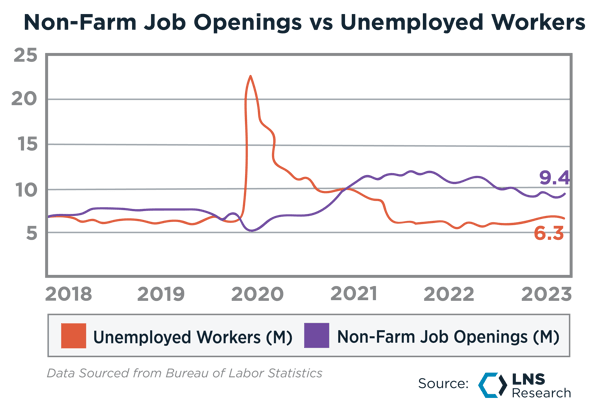
Declining tenure, an aging workforce, and early retirements can be seen as a challenge or an opportunity for the future of industry. The Great Goodbye will lead to the final curtain call for many. Developing strategy and taking action now will be pivotal to attracting and retaining future talent.

My prediction for 2024 is that manufacturers will recognize the importance of adopting a broader Future of Industrial Work (FOIW) strategy. Specifically, I see three big AHAs that will set the stage in 2024 to compete for future talent.
-
-
-
The leadership approach must change to attract and retain talent within manufacturing.
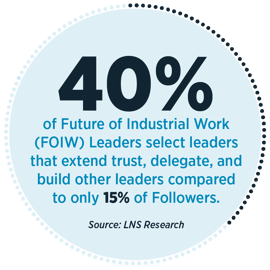 Over the past three years, the average tenure, time in position, and retention across manufacturing has gone down over 75%. A command-and-control structure doesn’t resonate with what employees seek in an employer. Changing the leadership approach can’t be done overnight, and taking the first steps will be essential to building a desirable work environment.
Over the past three years, the average tenure, time in position, and retention across manufacturing has gone down over 75%. A command-and-control structure doesn’t resonate with what employees seek in an employer. Changing the leadership approach can’t be done overnight, and taking the first steps will be essential to building a desirable work environment.
Assess the leadership approach, selection process, and expectations set from the top to drive business growth. FOIW research shows the shift to Servant Leadership must be supported with training that spans the organization and includes the manufacturing floor. To meet future needs, corporate messaging from leadership will consist of leading by example more, being authentic, and focusing on workforce needs.
-
Workforce development is essential to curtail negative operational performance impacts.
Workforce dynamics continue to shift rapidly, and radical changes to employee tenure are here to stay. Understanding what that means to the business is critical. A commitment to workforce development can bridge both business and employee needs. Manufacturing executives must begin a purposeful shift to build a foundation for future-proof operations.
Improving training programs, learning opportunities, and company policies can foster longer tenure. Workers are attracted to companies that prioritize meaningful work and employee development. In the following year, we will see increased investments in training and skills development across manufacturing.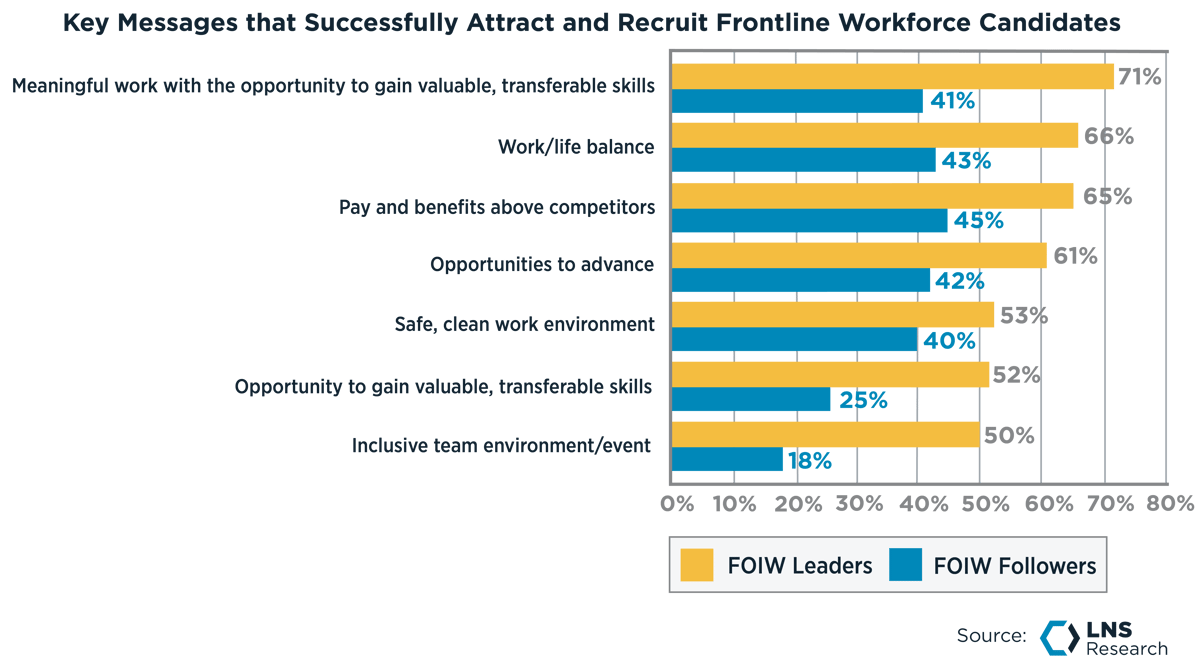
-
Employee engagement and Sustainability initiatives will be critical to compete for future talent.
Employees today are looking for companies that prioritize Sustainability and are committed to making a meaningful difference. Holistic Sustainability programs go beyond carbon reduction with initiatives focused on energy-efficient technologies, waste reduction programs, community engagement, and employee well-being. Workforce engagement is a key enabler in implementing green practices, building an inclusive environment, and ultimately driving progress toward aggressive corporate commitments.
Progressing toward zero harm, zero waste, and zero net carbon emissions will attract top talent. Focus on strong Environmental, Health, and Safety (EHS) management as the foundation to operationalize Sustainability. Data management and traceability will be critical as stakeholders demand transparency and clarity from corporate Sustainability reporting. I expect voluntary communications describing sustainable policies and practices that include workforce engagement efforts will increase as businesses face the need to improve Sustainability performance.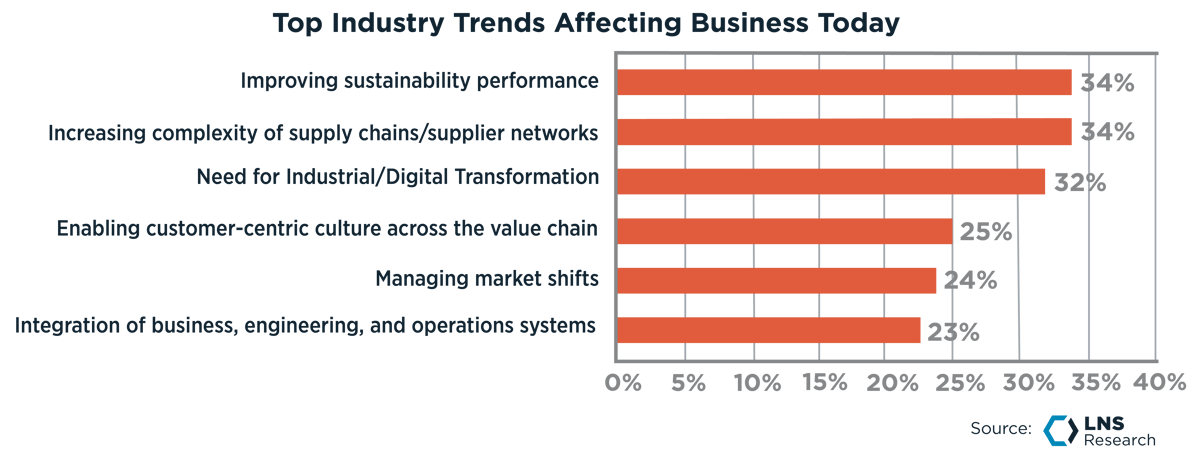
The year 2023 was a painful one in which manufacturers were forced to recognize that the labor crisis was far from over. Workforce shortages will worsen in 2024, and less experienced employees filling roles will cause proactive changes or force reactive measures to be taken. Safety, quality, and productivity performance will differentiate which of these two paths were taken. The glory days when a 30-year career was the norm are gone, but that doesn’t mean manufacturers can’t implement solutions that attract and retain new workers.
I look forward to sharing insights throughout 2024 that will provide a meaningful impact on your transformation journey. Happy New Year!
